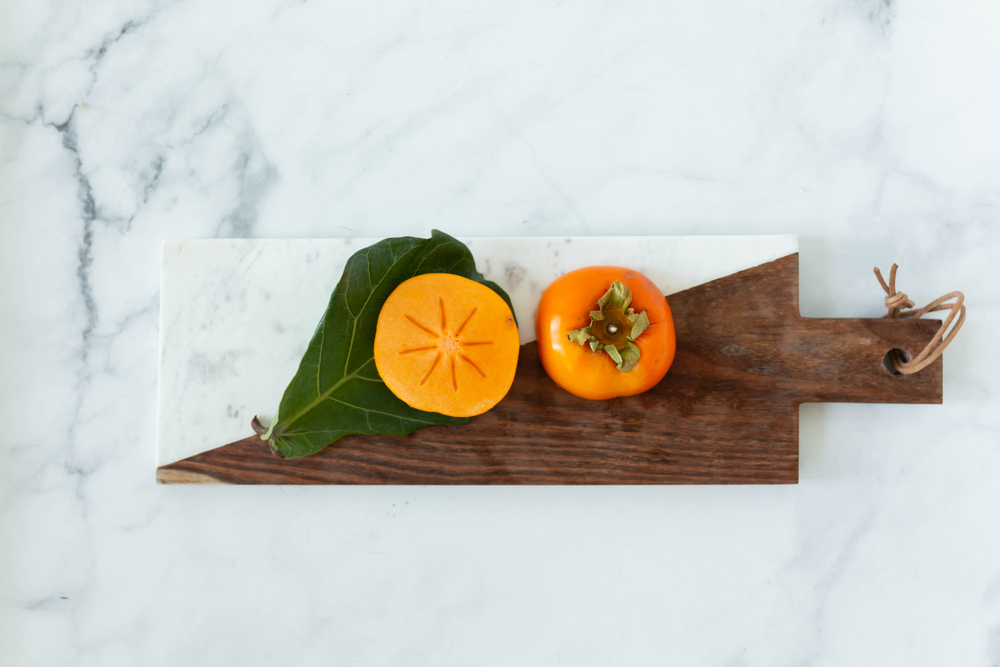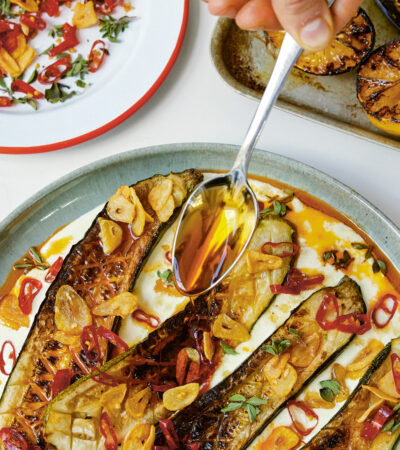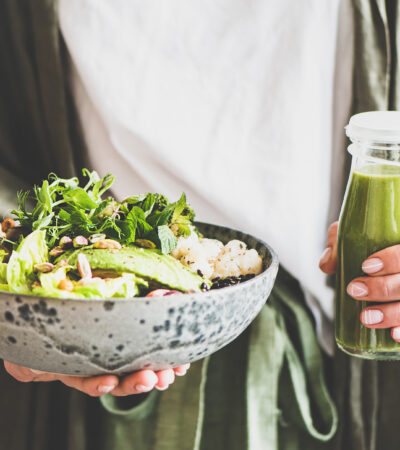We are all for eating seasonal fruit and veg here at Hip & Healthy. Not only are seasonal fruits and vegetables more nutritionally dense and contain less artificial ripening agents but, more importantly, they taste so much more delicious!
If like us, you’re always on the lookout for new fruit and veg that are in season, you may have come across a slightly more unusual fruit in the supermarket aisles…a persimon. Juicy and succulent, the Spanish Persimon fruit’s seasonal span runs from mid-October to January of each year. Grown indigenous in the Ribera del Xúquer Valley near Valencia in Spain, the location provides the ideal environment for the persimon fruit to grow and flourish, making them guaranteed to be the very best quality. First discovered over 50 years ago, the Spanish persimon is unique to the region and is thought to have developed naturally from the conventional persimon varieties that were introduced into eastern Spain.
Nicknamed “the Star of Valencia” due to the star shape that’s revealed when they’re cut in half, the Spanish persimon is similar in appearance to mangos and peaches, with a beautifully vibrant orange colouring and perfectly rounded shape. Often speckled with natural sugar freckles, it has a super sweet taste, ideal for satisfying your sweet tooth cravings!

Aside from their sweet, honey-like taste, the persimon fruit is packed with an impressive amount of nutrients. They contain over half the daily recommended amount of Vitamin A, a fat-soluble vitamin which massively benefits the immune function, vision and fetal development. The persimon is also rich in Vitamin C, Vitamin E, Vitamin K, Vitamin B6, Potassium, Copper Manganese, Thiamin (B1), Riboflavin (B2), Folate, Magnesium and Phosphorus. These vitamins and minerals contribute to supporting the immune system, reducing blood sugar, supporting bone health, helping to protect cells, maintaining healthy skin and blood vessels and helping with wound healing. In addition to this abundant amount of nutrients, the persimon also contains a ton of plant compounds like tannins, flavonoids and carotenoids. Not to delve too deep into the science behind it, but plant compounds are the element which enables fruit and veg to grow, metabolise, and reproduce. Studies have found that plant compounds aid brain function, which is specifically beneficial as we age and our cognitive function declines. The plant compounds also have antioxidant qualities which may decrease the risk of certain chronic diseases through deterring cell damage by counteracting oxidative stress. In fact, the persimon fruit has been linked to lower rates of heart disease, age-related mental decline and significantly reduced risk of developing type 2 diabetes. persimons are a high-fibre fruit, helping lower LDL cholesterol levels enabling regular bowel movements and preventing blood sugar spikes.
Us humans tend to be creatures of habit and it can be easy to stick to the same old fruit and veg week in, week out. We’re all familiar with browsing the fruit and veg aisle, admiring all the exotic, colourful fruits but never actually taking the plunge and putting them into our baskets, because we’re unsure of how to prepare and eat them! To give you a helping hand, we’ve got a quick step-by-step guide to show you how to cut and prepare a persimon correctly…
- With a chopping board and sharp knife, remove the leaves and core of the persimon using a cone shape to cut around the top.
- If you would you prefer to eat without the skin use a peeler to remove it. This is not essential as the skin is completely edible
- Cut in half then lay with the flat side on the chopping board and slice into segments, enjoy!
The persimon is incredibly versatile, making it the perfect addition to a sweet or savoury meal (or as a healthy on-the-go snack… no peeling required!). They can be eaten fresh, dried or cooked, each offering a unique flavour and texture. The options are endless from salsa, jam, fruit crisps, salads, cake, soup, cocktails…you name it! With countless health benefits, adding the persimon fruit into your diet should be a no brainer.
Our favourite Spanish Persimon recipes…
Fennel and Spanish Persimon Filo Star Tart
Packed with flavour and amazing textures, this Filo Star Tart is the perfect warming veggie dinner party dish. For extra flavour crumb over some stilton or feta cheese to give an extra kick.
Persimon Healthy Breakfast Pots
On-the-go breakies are the ultimate lifesaver! Batch prepare these delicious breakfast pots to grab each morning and fuel you for your day.
Spiced Roasted Persimon, Cauliflower and Avocado Buddha Bowl
The healthy mid-week dinner of dreams. High in protein, healthy fats, packed with veggies and full of flavour, this Buddha Bowl ticks all the boxes.
Persimon and Stem Ginger Sponge
A winter dessert to warm your cockles! Enjoy with a drizzle of the Oatly Vanilla Custard, perfect for a lazy Sunday afternoon.















